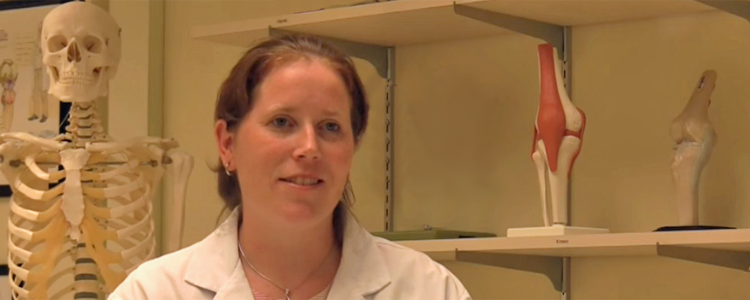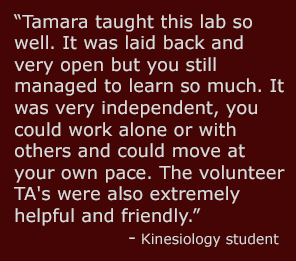Tamara Maciel: The Anatomy of Learning
 |
| Tamara Maciel, School of Anatomy |
Written by Arifeen Chowdhury, Special Projects (Teaching Stories), CTE.
Tamara Maciel is an expert in a very corporeal discipline – human anatomy – yet she still manages to infuse a great deal of soul into her work. Her interest in the human frame is reflected in her dual role at Waterloo: she is both an instructor and the Teaching Laboratory Coordinator in the School of Anatomy. Anatomy is essential to understanding the human body, and Maciel takes pride in helping her students build a foundation for future careers in health and medicine.

Anatomy is often considered a content-heavy discipline that requires a lot of rote memorization, but Maciel eschews that approach. Learning anatomy, she says, is like learning a new language, and while it does require practice and repetition, she aims to ease the burden of memorization by focusing on concepts, logical relationships, and experiential learning. In addition to making and uploading videos on essential anatomical topics, Maciel has her students engage in student-driven, hands-on learning: they examine human cadavers in Waterloo’s Human Anatomy Dissection Laboratory, and they reinforce their learning by sketching the components they observe. While anatomy apps for mobile devices can supplement this experiential learning, Maciel admits she is a bit old school: “There are no substitutes for the real thing,” she says.
Collaboration is also an essential part of Maciel’s teaching practice. She encourages students to share information and engage in discussions via social media such as Facebook groups. Maciel and her colleagues also provide leadership opportunities for students: after successfully completing an anatomy course, many students become Volunteer Teaching Assistants. Each of these students is assigned to a lab section for an entire term, where they mentor students who are new to the program. The experience also, of course, reinforces their own knowledge. With such resources and teaching strategies in place, Maciel says she tends not to worry about how many students are passing or failing — she believes they can all be successful if they diligently and consistently apply themselves.
Maciel recognizes that teaching is an evolving craft, and that how she teaches now might not be how she teaches in the future. “Students are always the same age,” she says, “but the instructors are not. We keep getting older and sometimes we don’t recognize that we have to adapt and change with the times.”
Read more Teaching Stories
Tip sheets
CTE has developed more than 100 Teaching Tips. Each one is a succinct document that conveys useful ideas and practical methods for effective teaching. Some of the Teaching Tips that are relevant to the strategies mentioned in this Teaching Story include the following: